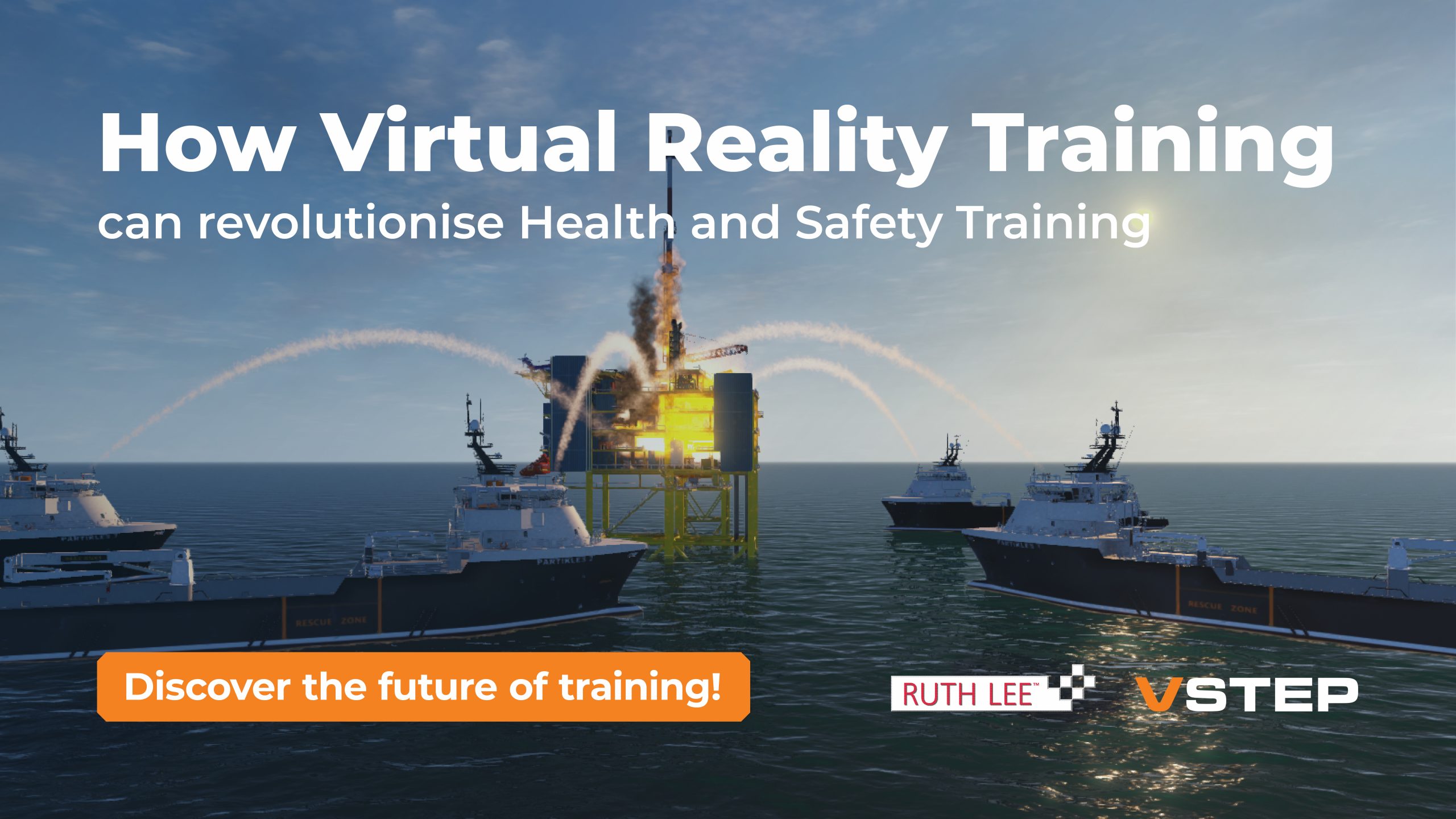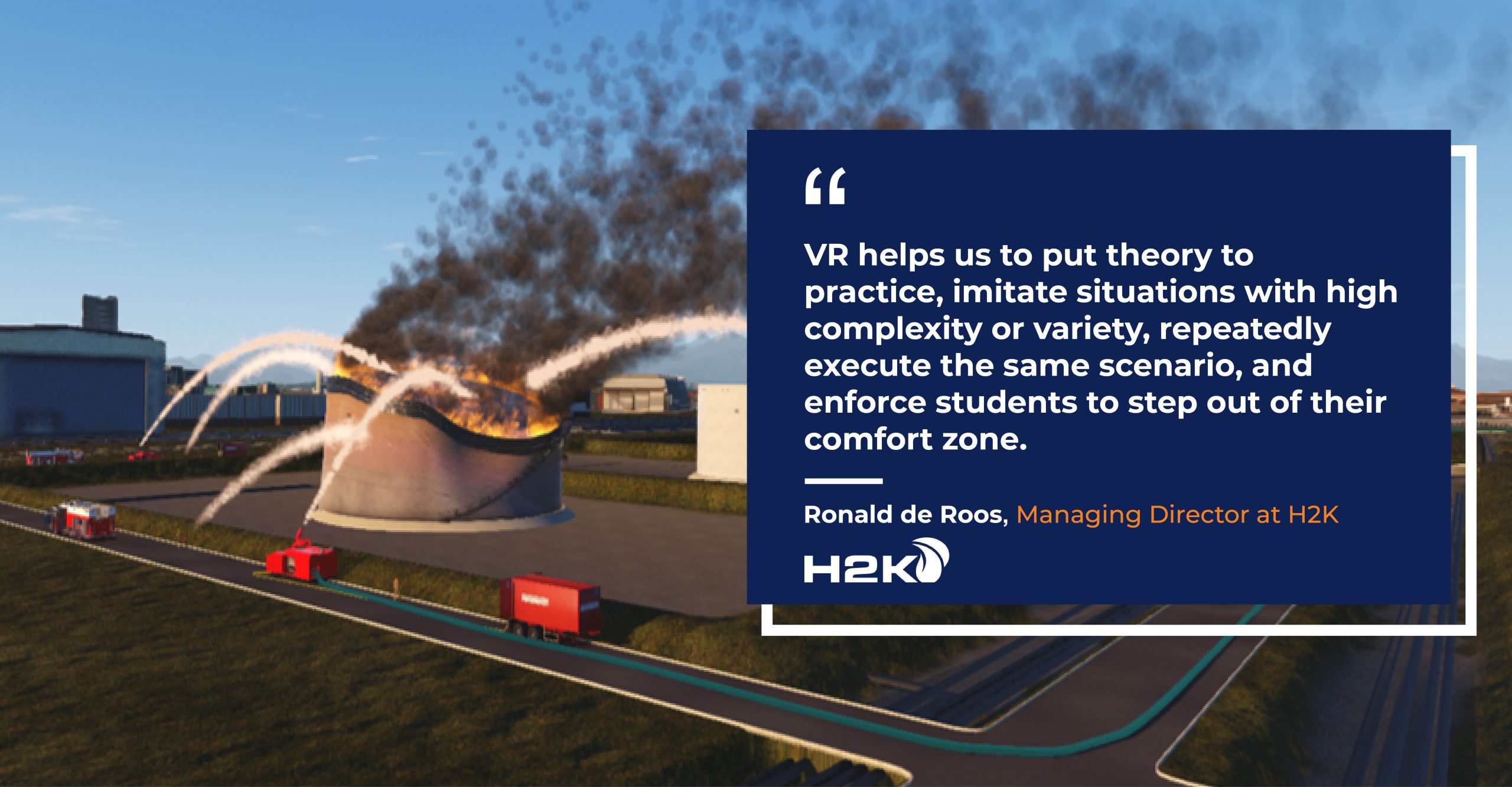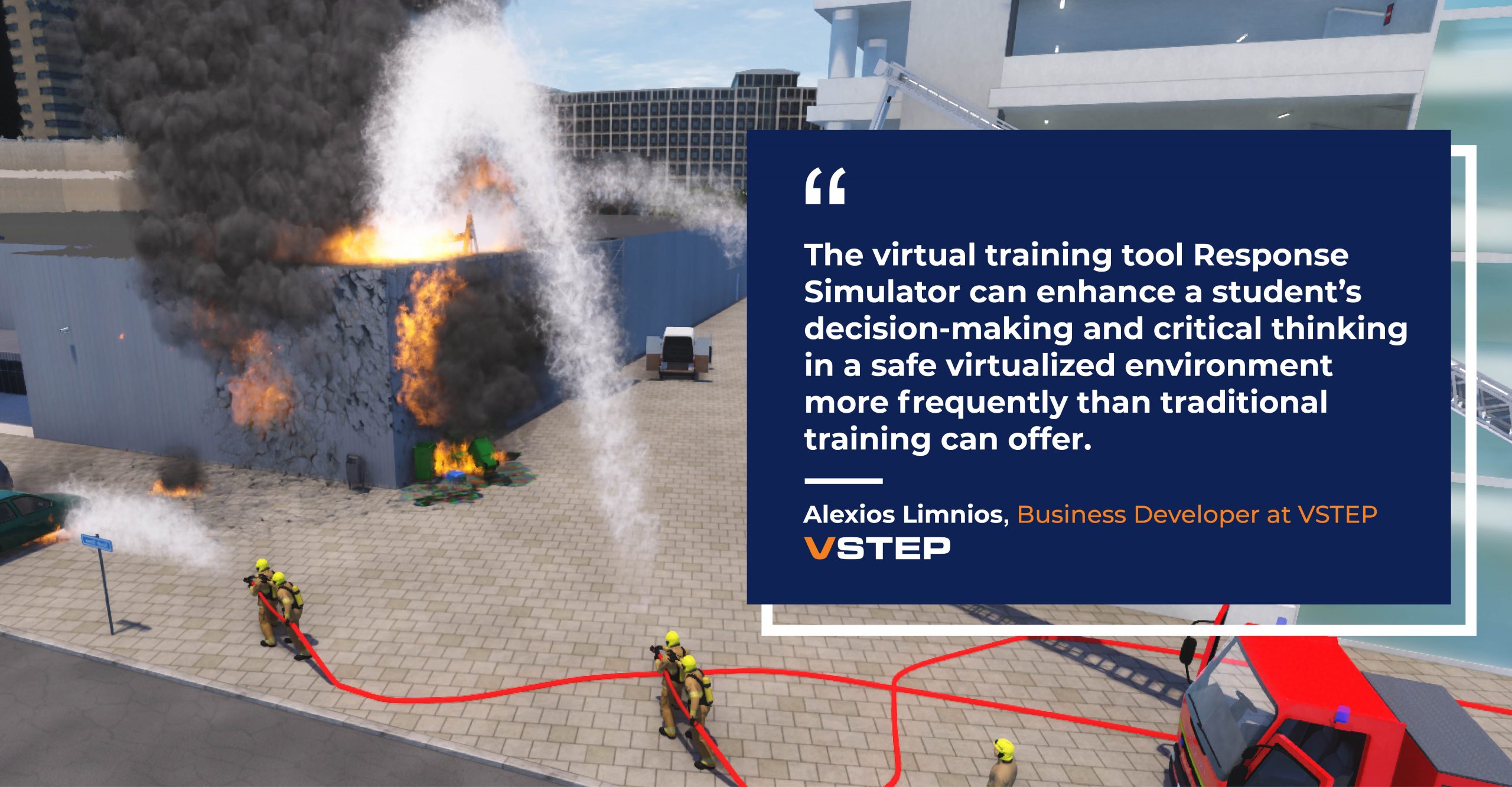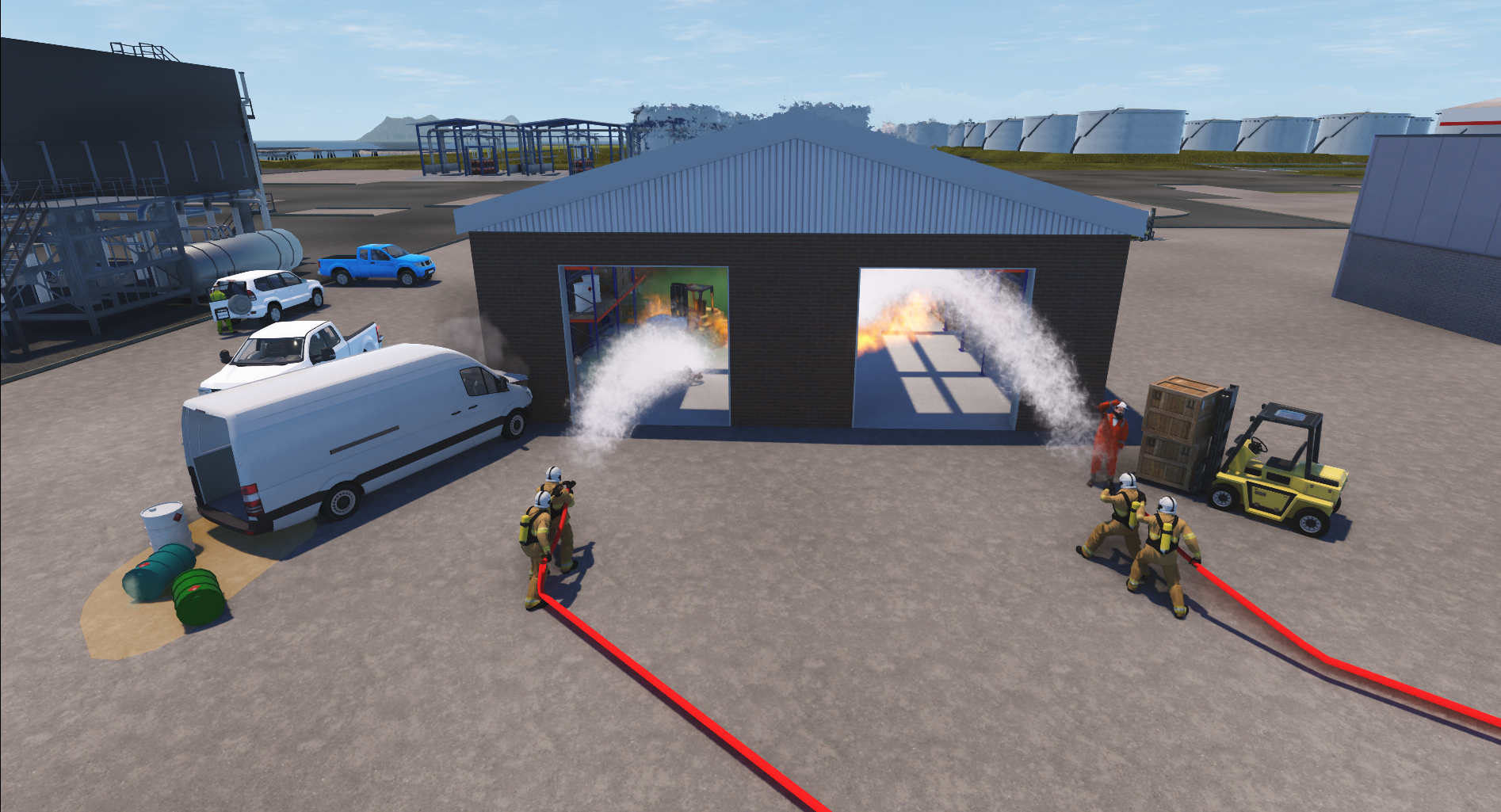
The challenges of petrochemical safety training
The petrochemical industry is very dangerous to operate in, where incidents can have a devasting impact on the company, people, and employees. Due to the unique nature of the field, training professionals face challenges such as maintaining safety standards, the cost and time of staging an incident, wear and tear of equipment.
Having an effective training tool can help petrochemical personnel enhance safety preparedness before encountering dangerous situations in real life. Virtual training allows trainees to experience an immersive training experience in a controlled, risk-free environment. Ultimately, this helps reduce the risk of environmental and safety accidents and promotes a safer workplace.
“Using virtual reality software to simulate incident scenarios, our instructors have the means in hand to offer an endless variety in training situations. Virtual training is one of the tools in our ‘education toolkit’. From our perspective, virtual training tools such as Response Simulator are perfect for teaching protocol-based operations, because procedures can be drilled in a time and cost-efficient manner.
VR helps us to put theory to practice, imitate situations with high complexity or variety, repeatedly execute the same scenario, and enforce students to step out of their comfort zone. For some training it is relevant to approach real objects as close as can be, for others it is eligible to stage a fictional surrounding to inflict an open mind.”
– said Ronald de Roos, Managing Director at H2K – an agency that provides practical education and training for industrial and public firefighting services throughout Europe, Asia and Africa.

Virtual training can be the key to solving these challenges
No time or location constraints
Petrochemical operation normally takes place in areas that are difficult to reach, making live training costly and time-consuming. With the COVID-19 crisis limiting transportation and physical contact, virtual reality technology can help access locations, scenarios, and equipment that are challenging to experience in real-life. It can be implemented remotely at the office or from home, allowing trainees to experience multiple environments. With a laptop, trainees can train together from anywhere in the world.
Immersive, hands-on nature allows for training repetition
With the advanced graphics and fully immersive nature of virtual training solutions, trainees can have experience real-world incidents and immersive effects such as chemicals, fire, and sparks without the real-world risk. They are also able to experience threats, psychological threats and anxiety during scenario training more intensively.
Alexios Limnios – Business Developer of the virtual training tool Response Simulator (RS):
“We see that large practical training exercises are organized only a few times a year and are often a heavy resource burden for the coordinating and participating organizations. At VSTEP, we want to challenge first responders by putting them in both familiar and unfamiliar virtual surroundings.
If we look at the progress and trends being set in the energy sector with respect to minimizing risks and maintaining safety, our focus has largely centred on simulating low probability, high-risk events. The goal is to enhance a student’s decision-making and critical thinking in a safe virtualized environment more frequently than traditional training can offer – something that is accomplished with RS.”

In the petrochemical industry, safety experts are often depended upon when making difficult decisions during emergency scenarios where seconds count. Emergency decision-making (EDM) skills can be developed through repeated virtual training exercises.
Adaptability and flexibility
Using virtual training also means that trainees can experience a wider variety of complex training scenarios in a single session. An oil leakage on offshore platform, the evacuation of passengers in a crashed vessel are just some of the many possibilities of virtual training. Trainees learn skills such as incident response, communication and teamwork while working under stress. Instructors have total control over the scenario simulation and are able to repeat exercises without having to coordinate additional resources and personnel.
All in all, virtual training offers a versatile and flexible solution, that can add value to any organisation with a focus on safety and/or security.
The future of training
Ruth Lee Ltd – a world-leading provider of manikins and training aids has been constantly seeking new ways to make safety training realistic, effective, and memorable for all the right reasons. One way they evaluate their current business offering is to speak to customers who are experts in their field. In 2020 they held several panel discussions, which were attended by leaders in all manner of rescue training, including the fire service, technical rescue specialists, water rescue experts, former Navy personnel, paramedics, and specialist safety and rescue training providers.
Called “The Future of Training”, these panel discussions aimed to give us an insight into emerging trends across a range of sectors. Here are some of their findings:
- Training in a virtual world: During the pandemic, with the need to minimize person-to-person contact, but still attain high levels of training competency, virtual training has offered a solution to many teams. In particular, the fire service and maritime sectors appear to have embraced a virtual approach to training which allows them to greatly increase their capabilities within incident command and crisis management. With a high demand for safety training, these industries often ‘set the standard’ for others to follow in terms of adaptation of new technology.
- Cross-sector collaboration: Participants cited the obvious logistical benefits of virtual reality training, which allows teams from all over the country to take part in the same training scenarios for a joined-up, collaborative learning experience. This is clearly an important part of planning and preparation.
- Advancements in virtual reality and augmented reality mean that complex simulations which would previously have been extremely expensive to set up and take lots of time to prepare can be replayed over and over, whilst adapting to the responses of the learner.
- Adoption of technology within Incident Command, both within the Emergency Services and Petrochemicals has been significant and this ranges from tabletop use of stills and effects, right the way up to fully equipped ICT suites utilizing laptops, monitors, radios and VR headsets which immerse candidates in realistic and dynamic emergency scenes.

Ruth Lee Ltd have been impressed by the level of detail which Response Simulator offers to end users. Ian Garner, Sales Executive at Ruth Lee Ltd said,
“The overriding observation that we have made is that Incident Commanders are increasingly looking to create realistic scenes and immerse a candidate inside them to create the same urgency and impetus on emergency decision making. This really does prepare Incident Commanders for the kind of challenges that they may come across at a live situation.
Based on what we have seen with Response Simulator and in our discussions with customers we are confident that moving forwards, incident command training will move further in this direction and we are delighted to see the Response Simulator product develop and proactively push out in that direction, with lots of exciting developments to come!”
For an impression of the Response Simulator software, watch the video below!
About
VSTEP makes sure that you are prepared for real-life situations with our leading solutions for simulation and virtual training. Our state-of-the-art products allow you to train your skills for every scenario possible in a practical, cost effective and sustainable way. We are a Dutch based and ISO9001:2015 certified company. Stay up-to-date about the developments at VSTEP by subscribing to our newsletter or follow us on Linkedin.